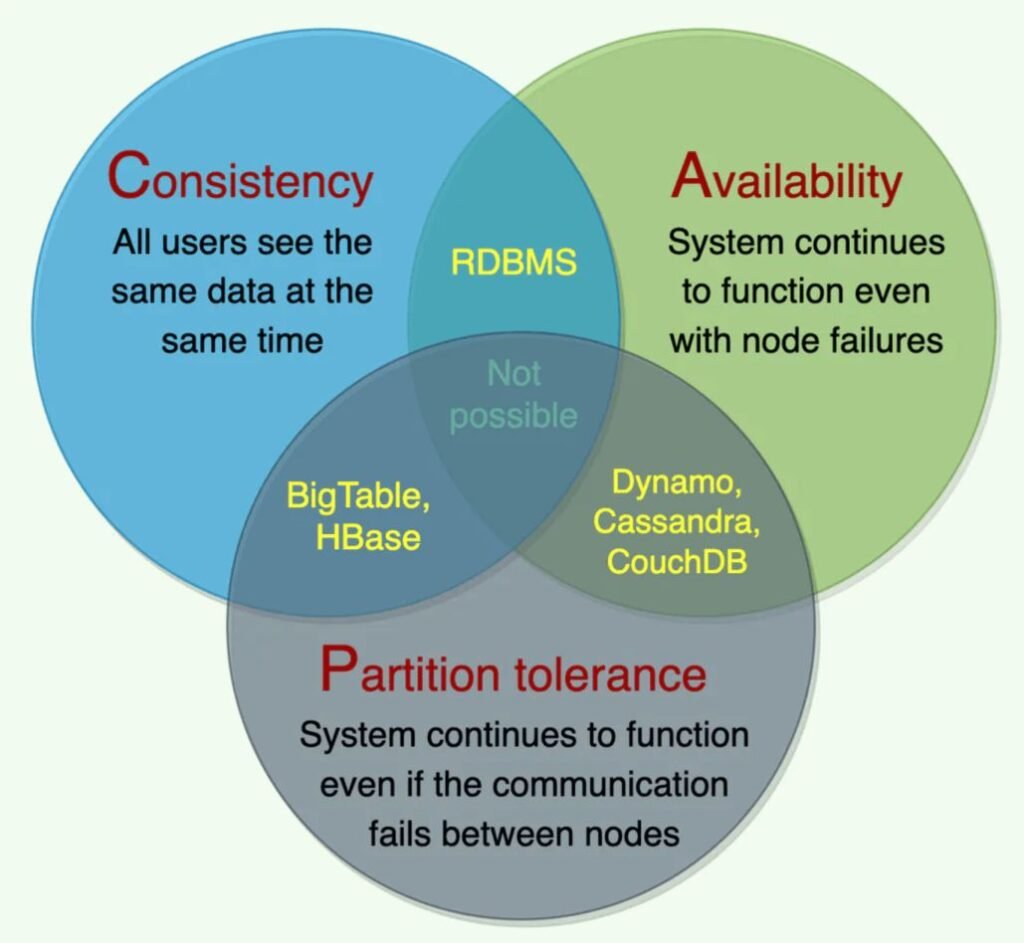CAP Theorem
In this tutorial, we are going to discuss about Introduction to CAP Theorem in system design. The CAP theorem, also known as Brewer’s theorem, is a fundamental concept in distributed systems design. It was introduced by Eric Brewer in 2000.
The CAP theorem provides a framework for understanding the trade-offs between three essential properties of distributed systems: consistency, availability, and partition tolerance.
Background and history
Before the introduction of the CAP theorem, distributed systems were primarily designed with a focus on consistency and availability, often ignoring partition tolerance. However, as distributed systems grew in scale and complexity, it became evident that addressing network partitions was crucial for ensuring reliable and fault-tolerant operation.
Overview of the CAP theorem
The CAP theorem states that it is impossible for a distributed system to simultaneously provide all three properties: consistency, availability, and partition tolerance. In other words, a distributed system can only guarantee two out of these three properties at any given time. The theorem highlights the inherent trade-offs that system designers must consider when building distributed systems.
- Consistency: A system is considered consistent if all nodes see the same data at the same time. This means that any read operation should return the most recent write operation’s result, ensuring that the system maintains a single, up-to-date version of the data.
- Availability: A system is considered highly available if it continues to operate and respond to requests despite failures, ensuring that every request receives a response, either a success or an error.
- Partition Tolerance: A system is considered partition-tolerant if it can continue to operate and maintain its guarantees despite network partitions, which are situations where communication between nodes in the system is interrupted or lost.

However, it’s essential to note that the CAP theorem doesn’t imply that one has to sacrifice one of these guarantees entirely. Rather, it describes the trade-offs and constraints inherent in distributed systems design. Different systems prioritize these guarantees differently based on their specific requirements and use cases.
This provides a useful guideline for understanding the limitations of distributed systems and making informed design decisions that balance the needs for consistency, availability, and partition tolerance.
Different distributed systems make different trade-offs based on their requirements and the specific use case. For example, some systems prioritize consistency over availability, while others prioritize availability over consistency. And some systems aim for a balance, achieving what’s often called “eventual consistency.”
Understanding the CAP theorem helps in designing and architecting distributed systems, as it guides decision-making regarding trade-offs and system behavior under different conditions.
That’s all about the CAP Theorem in system design. If you have any queries or feedback, please write us email at contact@waytoeasylearn.com. Enjoy learning, Enjoy system design..!!